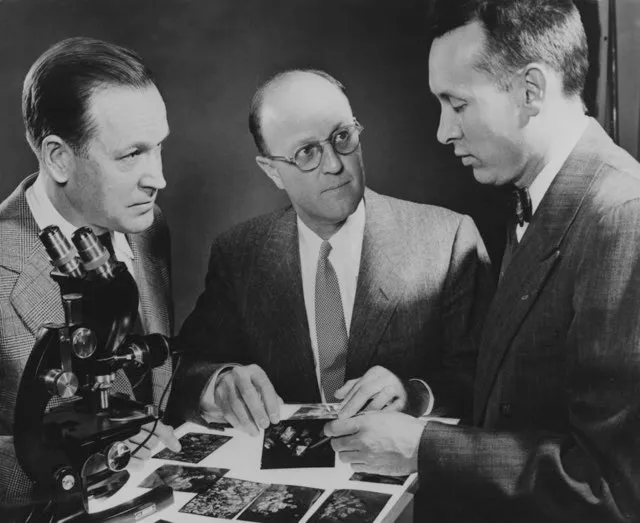In 2019, calling something “fake” is the ultimate insult. Fake news. Fake meat. Fake. Fake. Fake. With each of these things, “fake” is an epithet and a judgement even more than it is just a description. Calling something fake makes it easy to dismiss it – it implies that fakes are, by definition, bad and what we believe is the real thing is, by default, superior.
There are many ways that things can be less-than-completely-real and often the line between fake and not-fake is easy to establish. It ought to go without saying that fakes that attempt to deceive are simply frauds and it’s easy to offer moral objections to deception. (Incidentally, while we balk at validating frauds, let’s be honest – we all love a good story of someone else being swindled, conned, or bamboozled as long as it isn’t us.) But not all things slot neatly into “real” and “fake” categories; sometimes the line between real and fake isn’t a binary classification so much as it is a continuum.
The world is full of objects that live and move along that continuum, constantly challenging how we think about what makes something real and authentic. They’re what we might call genuine fakes. They’re copies, replicas, simulacra, facsimiles, artifices, and models. History tells us that they’re are sometimes real, sometimes authentic, and always challenging.
Read more about science history:
- The weird ways extraordinary scientists made synthetic elements
- John Bardeen: the greatest physicist you (probably) never heard of
- Three famous chemists who changed our understanding of the central science
Here in twenty-first century, genuine fakes are having a moment. As science, technology, and engineering have become better and better at replicating the minutiae of objects’ material makeup, they challenge us to move beyond dismissing non-natural objects as fakes – not only that, but they challenge the assumption that fake is, by definition, bad.
Could, for example, a human-made object (something that we might be quick to call “fake”) meet our expectations for authenticity better and more directly than the natural one ever could? And, more to the point, could replicated objects be more desirable – more ethical – than their natural counterparts? Offering ethical alternatives is the future of genuine fakes.
Take laboratory-grown diamonds, for instance. Counterfeit gems are nothing new. As long as gems have been mined, sold, worn, and valued, they have been faked. There are a plethora of reasons for people to make imitation gems – some legitimate, many not. (In his famous Historia Naturalis, Pliny the Elder lamented the proliferation of such fakes; specifically, instances where clear glass look-alikes were substituted for the genuine thing.) But the “realness” of the gem was based on the mineral’s natural history – the fact that it had come from the Earth. For millennia, then, any non-natural diamond or gem couldn’t be real or authentic.
This changed in December of 1954, when the first laboratory diamonds were grown at General Electric’s labs in Schenectady, New York, by a team of scientists working on “Project Superpressure.” Also known as synthetic diamonds, laboratory-grown diamonds are, just like their natural counterparts, pure carbon with atoms arranged in a 3D lattice structure. Consequently, laboratory-grown diamonds are, for all intents and purposed, chemically identical to gems that were found in nature – nature just hasn’t grown them. And this posed the question about what, exactly, people were to make of those diamonds.

While the mid-twentieth century industrial markets were quick to embrace General Electric’s laboratory diamonds for grit and drill bits as a cost-effective way to produce diamonds on a mass scale, it was several more years before the quality of laboratory-grown diamonds could be considered adequate for jewellery. These new diamonds challenged the supply of diamonds going to market and the jewellery side of the diamond market dismissed laboratory-grown diamonds with the same suspicion and disdain that had been historically reserved for outright frauds. (“It’s like a man catching a trout out of a hatchery pond,” William S. Preston a former president of the American Gem Society said in an interview for The Burlington Free Press on 8 April 1955, after seeing what General Electric had created. “Their appearance is much the same but it’s not the real thing.”) What sort of real, authentic gem, the connoisseurs sniffed, could simply be conjured out of a laboratory?
What would it take, then, for people to consider a human-made gem as real and as authentic as ones found in nature?
It turns out that growing ethical concerns about the provenience of natural diamonds have spurred a willingness to re-examine how we think about what counts as a real gem. Over half a century since diamonds were first grown in Schenectady, their laboratory provenience has become a selling point for contemporary consumers. The human cost of conflict diamonds catapulted into public consciousness with the 2006 film, Blood Diamond, starring Leonardo DiCaprio. Here, the “real thing” – natural diamonds mined from the Earth – had the potential to be ethically problematic, but laboratory-grown diamonds sidestep this issue. While it’s possible for natural diamonds can be certified as conflict-free, that certification doesn’t get around the question of mining’s environmental toll.
Companies that expressly sell laboratory-grown diamond jewellery offer a narrative for how laboratory-grown diamonds could become accepted as culturally authentic gems. The company Diamond Foundry, for example, advertises, “Just Diamond. No Mining. Delivering the future of diamonds.” Customers who are expressly looking for the non-natural because of ethical concerns are, piece by piece, legitimising laboratory-grown diamonds as real gems.
This is the future of genuine fakes. From laboratory-grown diamonds to plant-based meat to vegan pleather, non-natural objects that offer an alternative to their naturally formed counterparts will continue to fill the markets. These contemporary genuine fakes do not attempt to defraud or deceive their buyers as the demand for these alternatives means that consumers are willing to accept them as authentic. As the science, technology, and engineering of copies and replicas becomes more and more indistinguishable from their natural counterparts on a material level, it will be the alternate narrative that they offer that transforms how we think about them.
In the twenty-first century, fake doesn’t necessarily have to mean fraud. It doesn’t have to be an insult.
Genuine Fakes: How Phony Things Teach Us About Real Stuff by Lydia Pyne is available now (£16.99, Bloomsbury Sigma)
Follow Science Focus onTwitter,Facebook, Instagramand Flipboard
